The 140 Mile Per Gallon Car Is Real, and It’s Spectacular
The electric vehicle price wars have arrived and even the high-end automakers aren’t immune.
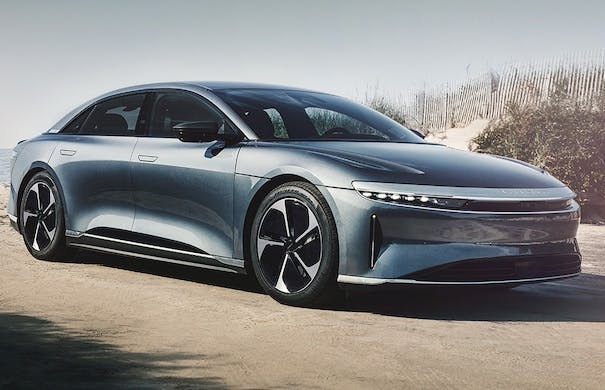
In 1993, the Big Three automakers and the federal government launched the Partnership for a New Generation of Vehicles, a program aimed at developing a hybrid “supercar” that could deliver 80 miles per gallon in a family-size vehicle.
Ford and Chrysler each produced 72 MPG prototypes by the end of the decade and General Motors hit the 80 MPG mark with the Precept, just as consumer interest in efficient cars was waning.
None of them led to production models due to a lack of demand and the multibillion-dollar program was retired in 2002 in favor of the Freedom CAR initiative, which was focused on hydrogen fuel cell propulsion. It lasted until funding cuts killed it in 2010.
Nevertheless, 80 MPG American vehicles are a dime a dozen today – from a certain point of view.
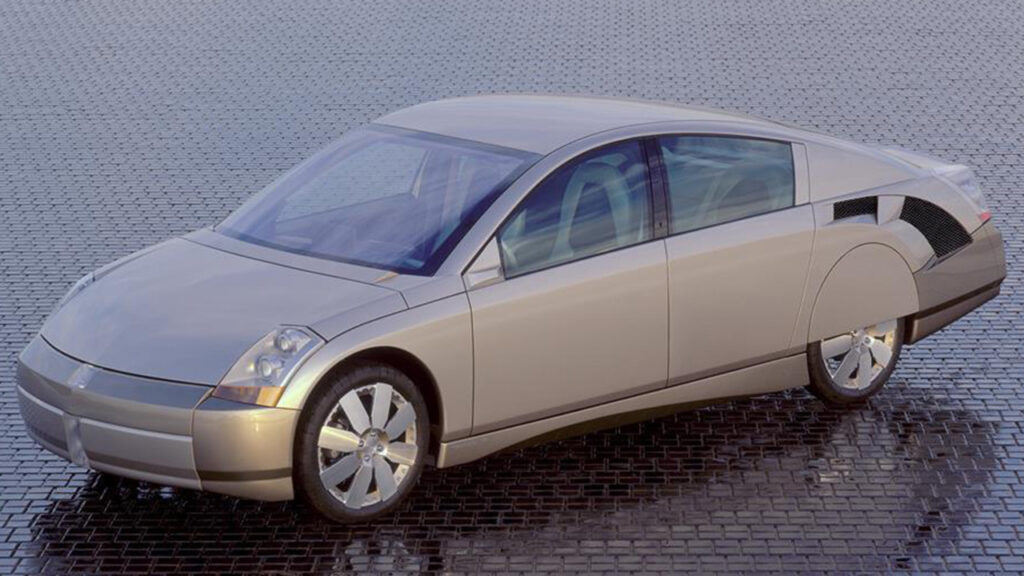
The EPA assigns electric vehicles an efficiency rating listed as MPGe, short for “miles per gallon equivalent.” It’s based on how much energy is stored in a gallon of gasoline, which has been calculated at 33.7 kilowatts of electricity
It gives car shoppers a way to compare efficiency across all types of powertrains, but when it comes to gas versus electric, there is no comparison.
The most fuel-efficient vehicle without a plug that’s on sale today is the Toyota Prius at 57 MPG, while even the Ford F-150 Lighting electric pickup is rated at up to 70 MPGe.
The Cadillac Lyriq electric SUV is rated at 88 MPGe, the Ford Mustang Mach-E is at 103 MPGe and the Tesla Model Y is at 123 MPGe, which partly explains why it was the best selling vehicle in the world last year. But it’s not the best when it comes to efficiency.
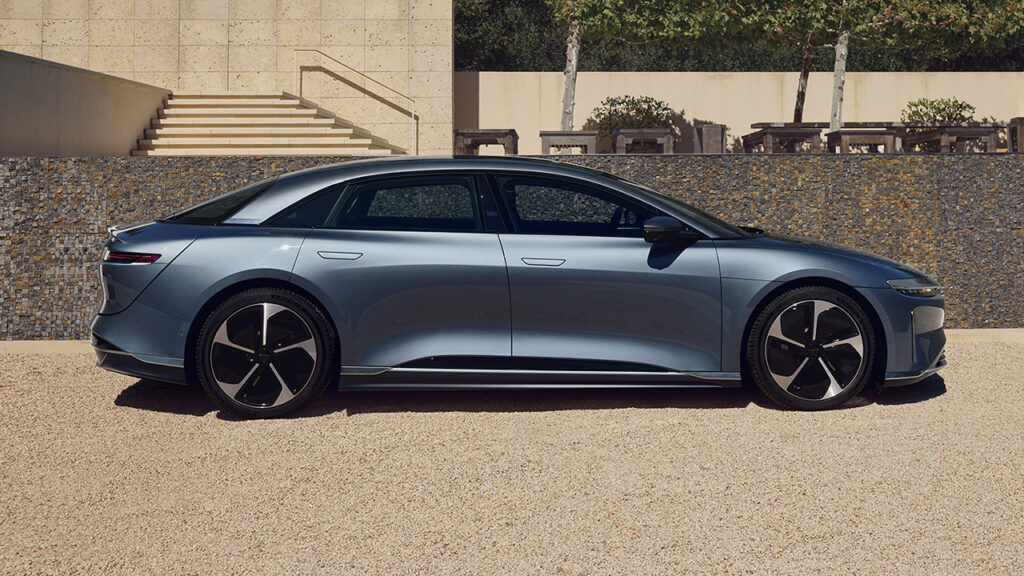
The Lucid Air Pure full-size luxury sedan is tied with the Hyundai Ioniq 6 compact at 140 MPGe, despite being more than twice as powerful as the $43,600 Hyundai.
The Arizona-built Air Pure has a 480 hp all-wheel-drive system and comes packed with cutting edge equipment at a starting price of $76,400, which is down from $88,900 last year. A rear-wheel-drive model is also offered for $71,400 with a 137 MPGe rating.
The EV price wars have arrived and even the high end automakers aren’t immune, although Lucid does continue to sell an ultra-luxurious Air Sapphire with 1,234 hp and lavish appointments for $250,500. It still gets 105 MPGe.
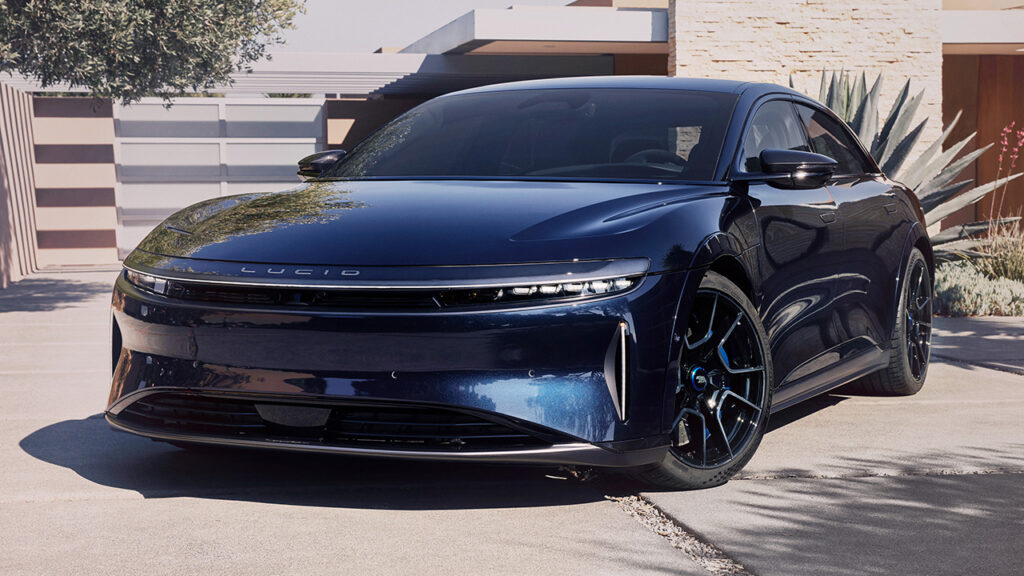
Lucid made its launch model a sedan instead of an SUV because it wanted to plant its flag with an astonishing efficiency figure. The Air has the lowest aerodynamic drag of any vehicle ever sold and weighs 4,564 pounds, which is light for an electric vehicle this size. The company also designs major components like the motors, inverter and transmission in-house to optimize how they work together from the start.
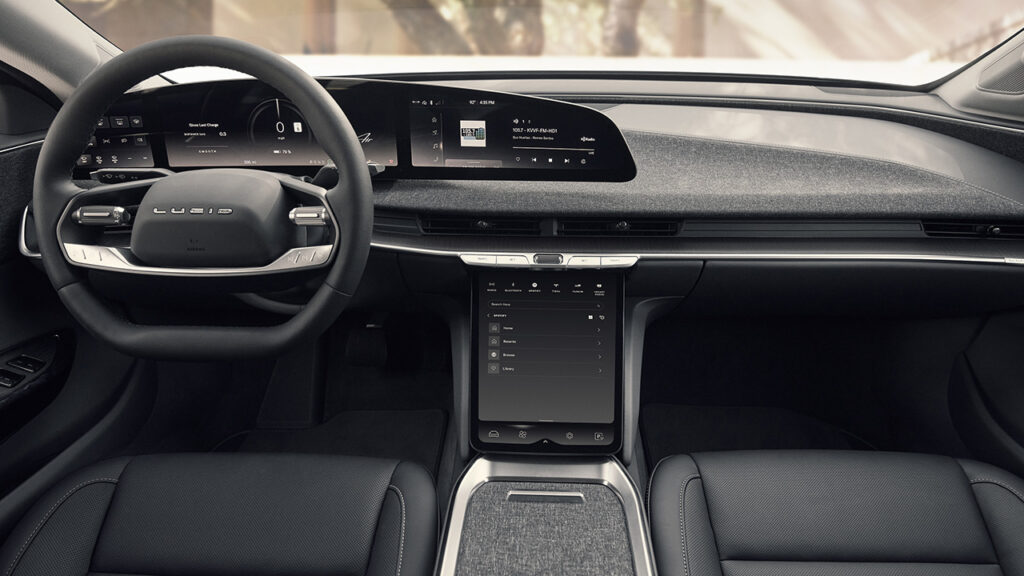
The Air Pure has UFO-on-wheels styling and its long wheelbase gives it one of the largest cabins of any car, with enough rear legroom for an NBA team out on the town. The interior’s updated mid century modern aesthetic is dressed in synthetic leather, cloth and sustainable wood trim.
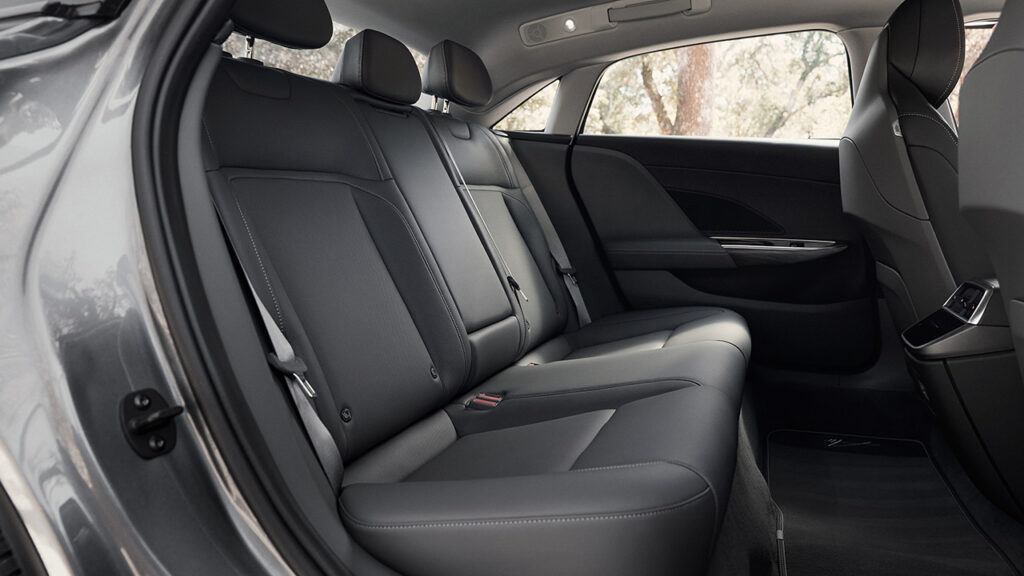
The dashboard is topped by a curved binnacle housing three digital displays and there is a fourth touchscreen control panel on the center console that can be hidden away with a finger swipe to reveal a storage area behind it.
As with many electric vehicles, the Air Pure has a “frunk” under the hood, which happens to be the largest of any car’s at 10 cubic-feet. The regular trunk is accessed through a clamshell lid that reveals a flat floor lined up with the top of the bumper, but there is an additional storage compartment underneath it.
The battery pack’s capacity is 92 kilowatt-hours and the range between charges is 410 miles. It can be recharged at up to 200 kW and filled to 80 percent in less than a half-hour, making it one of the best EVs for long trips.
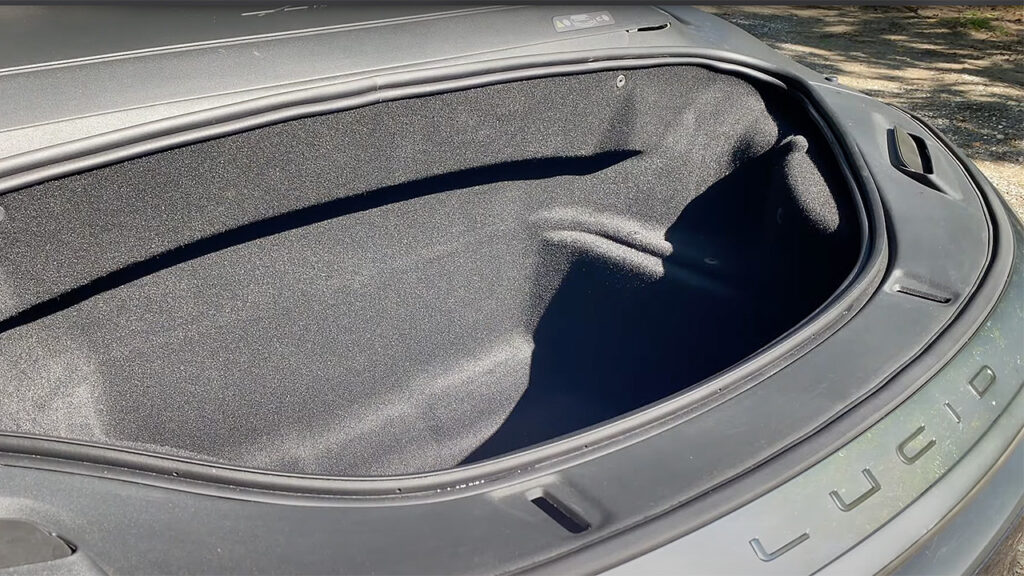
The Air truly feels like it is riding on a cloud, and its computer-controlled suspension masterfully shifts between comfort and handling needs as it silently goes along its merry way.
A suite of 32 sensors that includes cameras, radar and lidar provides a range of electronic driving assistance in a package called DreamDrive. It includes lane-centering adaptive cruise control, automatic emergency braking and a 360-degree parking camera system that also serves as a range finder, providing the distance between the car and what it’s about to run into down to the inch. It is designed to be upgradable with more capabilities as the software is developed.
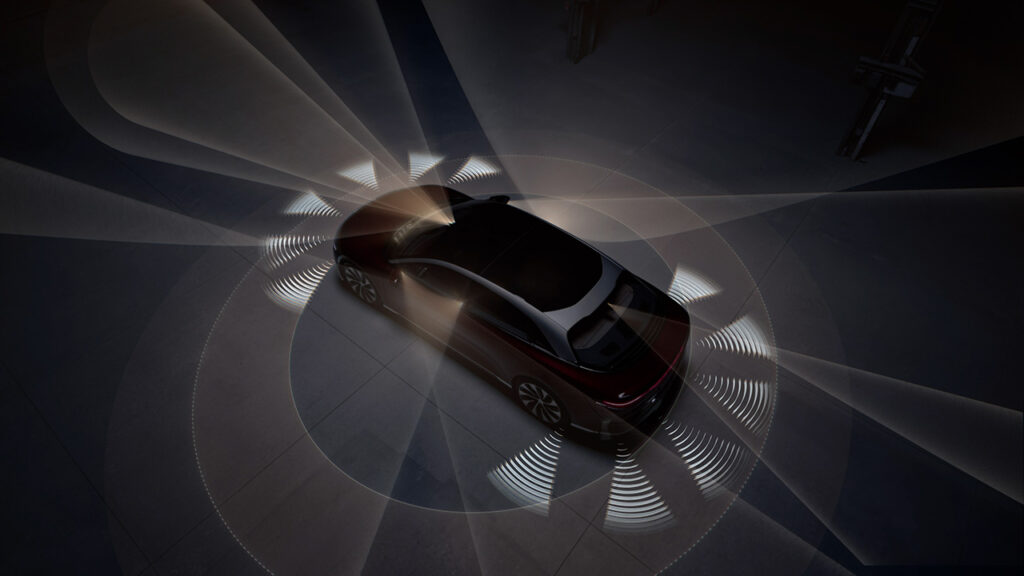
The Air Pure is a very fresh alternative to the similarly-priced, but not as roomy Tesla Model S, which has looked largely the same for a decade now. The Tesla’s 120 MPGe rating also comes up short to the Air Pure’s, but only if you’re careful with the Lucid’s options list.
If you switch from the standard 19-inch wheels to the 20-inch wheel and performance tire option, the efficiency rating drops to 121 MPGe and the range to 384 miles, in part because the tires are wider and operate at a lower pressure, increasing drag and friction.
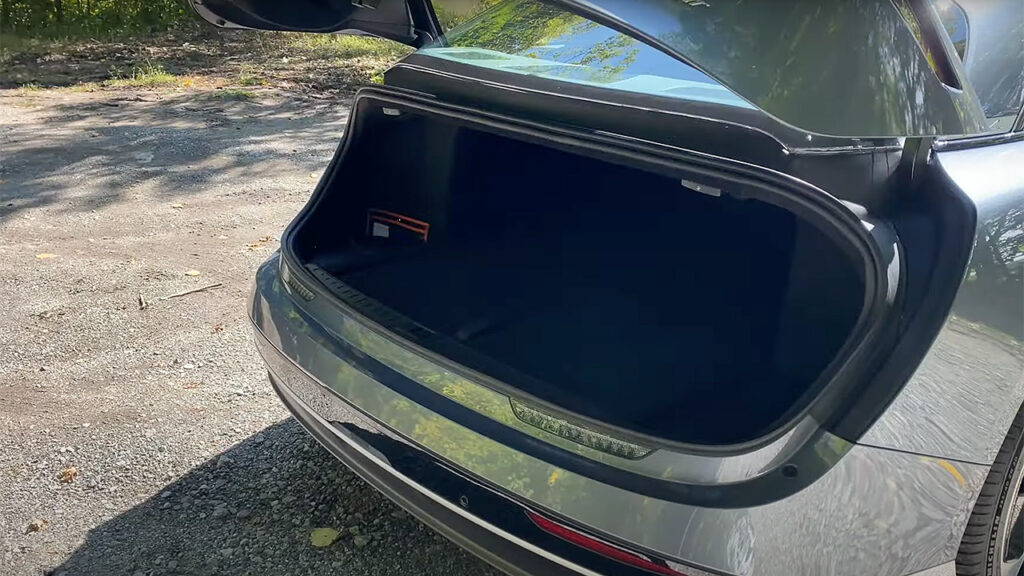
In either case, the Air Pure can accelerate to 60 mph in less than four seconds, which was supercar-quick just a few years ago.
Let alone in 1993.

